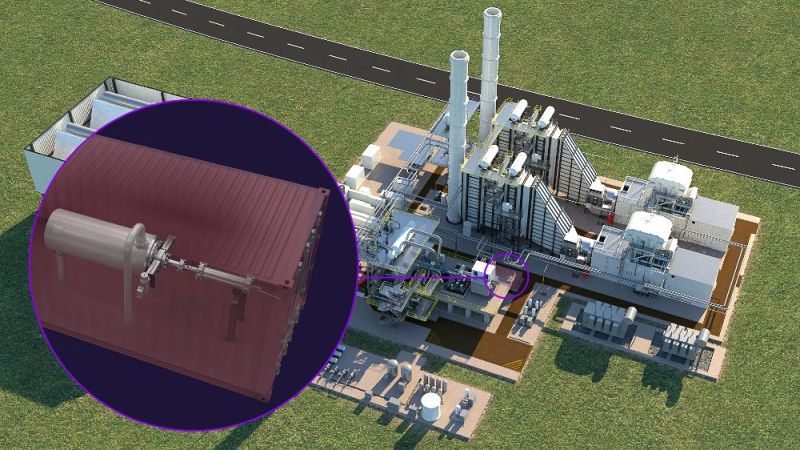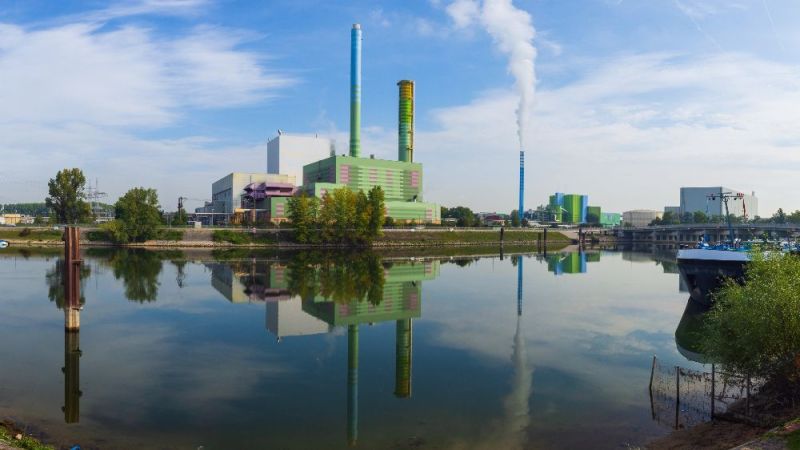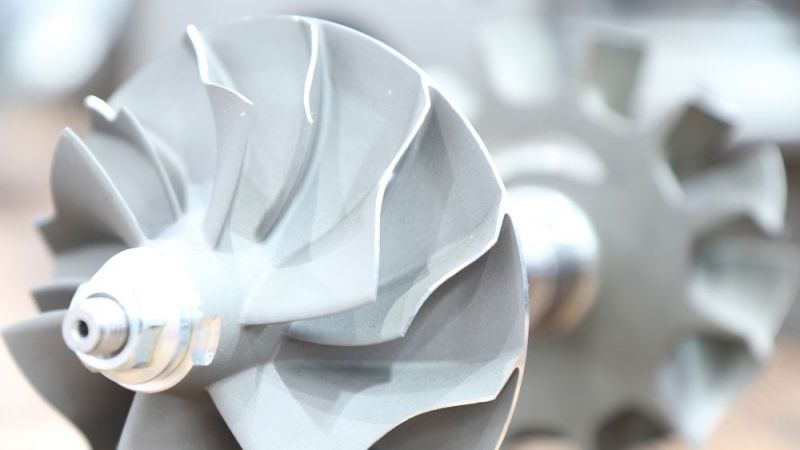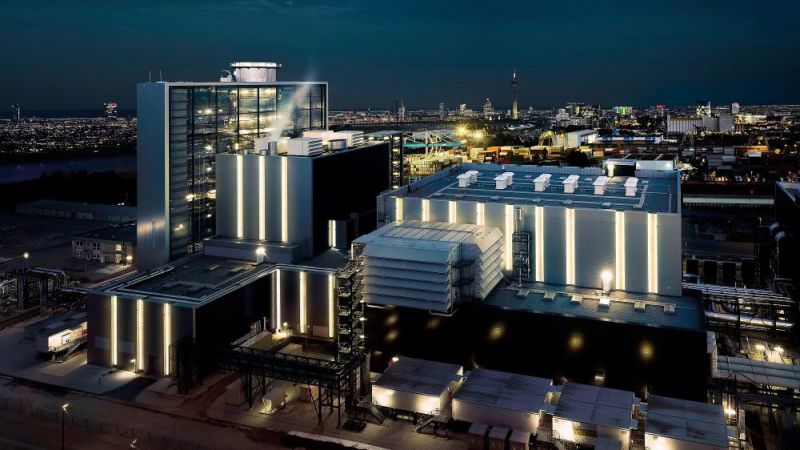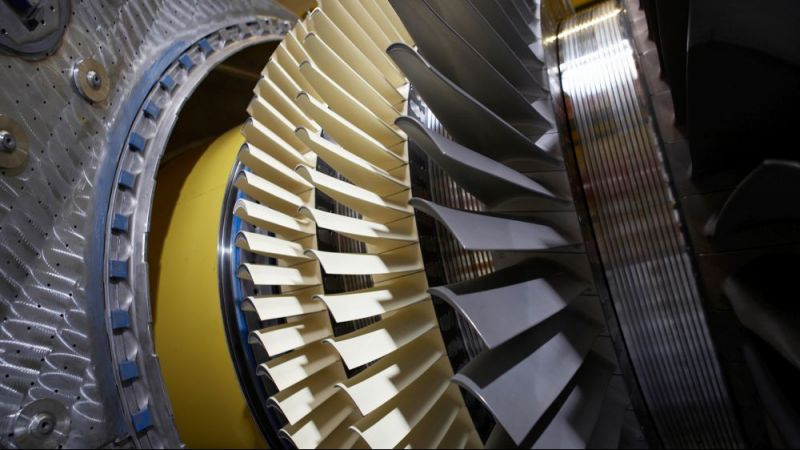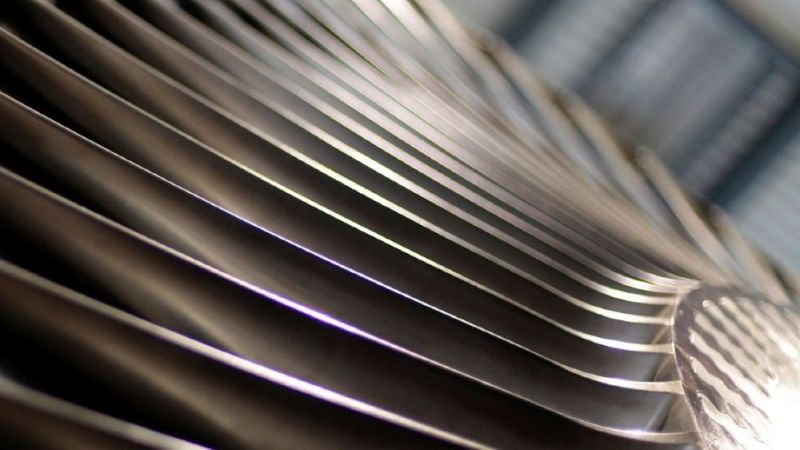Thermal power plants
Turbo-charged with sCO2 turbines
In the Carbosola research project, teams of scientists develop turbines that run on supercritical carbon dioxide.
Carbon dioxide (CO2) is known as a harmful greenhouse gas. Supercritical carbon dioxide (sCO2), on the other hand, can actually do the environment good - by being used as a heat transfer medium in power plant processes instead of steam. There, it could produce more power in a closed circuit under certain conditions in much smaller turbines than before. This saves costs and space, as the researchers in the Carbosola project were able to demonstrate. In concrete terms, the technology could be used on site at industrial companies such as steelworks or glass foundries, for example. The companies could channel their exhaust heat with high process-related temperatures from manufacturing directly on their factory premises into a small power plant with sCO2 turbines and produce electricity there.
Producing electricity 25 per cent cheaper with sCO2 turbines than with conventional turbines
This technology is still a vision of the future. However, the Carbosola research project and the resulting findings should enable the entry into this innovative technology in Germany. The German Federal Ministry for Economic Affairs and Energy is therefore funding the research project with 2.2 million euros. Initial results from the Carbosola research project show the huge potential for financial savings: "Our numerical investigations have shown that power generation costs with supercritical CO2 can be up to 25 per cent cheaper compared to production from a steam-driven power plant process", reports Carbosola project manager Dr Stefan Glos from Siemens Energy Global. Together with scientists from the Technical University of Dresden, the German Aerospace Center (DLR) and the Helmholz Center Dresden Rossendorf, Siemens is currently working on further optimising the turbine components and operating processes in digital models and laboratory experiments.
Supercritical CO2: not critical, but super
What makes supercritical CO2 so attractive for a power plant process? At 31 degrees Celsius and 74 bar, the carbon dioxide enters a state in which its weight corresponds to that of a liquid, but it can flow as easily as a gas. In this supercritical state, CO2 is extremely powerful: Its physical density is higher than steam while having good flow properties, similar to those of steam. This means that more power can be generated in turbines that are up to five times smaller. As this method is a closed cycle process, no carbon dioxide is released into the environment. In addition, exhaust heat from industrial processes is put to good use.
Further research is needed to ensure that the advantages shown can also be realised in practice. For example, supercritical carbon dioxide behaves differently in the turbine than steam. The special physical properties of the fluid mean that the turbines are sometimes subjected to greater stress than conventional turbines operated with steam. The components therefore have to be further developed and their materials adapted.
The technology is being tested in a test system that is unique in Europe
In addition to the design of a potential large-scale application, in recent months the individual components of a test system were configured and their interaction optimised by means of simulation. This test system will now be built over the next few weeks on the premises of the Helmholz Centre Dresden-Rossendorf, where the components and processes will be tested on a larger scale for their practicability. This will create an infrastructure that achieves process parameters that are unparalleled in Europe and enables investigations, for example on flow behaviour and heat exchange, but also on open material questions and effective operating strategies.



